
Yale astronomers and the Planet Hunter program discovered planet PH3c, which orbits erratically around its sun. This low-mass, low-density planet is 2,300 light years away and possesses a hydrogen and helium-rich atmosphere.Credit: Michael S. Helfenbein
Yale astronomers and the Planet Hunter program have discovered a low-mass, low-density planet that has a highly inconsistent orbit time around its sun. The new planet, called PH3c, is located 2,300 light years from Earth and has an atmosphere loaded with hydrogen and helium.
The elusive orb nearly avoided detection. This is because PH3c has a highly inconsistent orbit time around its sun, due to the gravitational influence of other planets in its system. “On Earth, these effects are very small, only on the scale of one second or so,” said Joseph Schmitt, a Yale graduate student and first author of the paper. “PH3c’s orbital period changed by 10.5 hours in just 10 orbits.”
That inconsistency kept it from being picked up by automated computer algorithms that search stellar light curves and identify regular dips caused by objects passing in front of stars.
Luckily, Planet Hunters came to the rescue. The program, which has found more than 60 planet candidates since 2010, enlists citizen scientists to check survey data from the Kepler spacecraft. Planet Hunters recently unveiled a new website and an expanded scientific mission.
“It harnesses the human dimension of science,” said Debra Fischer, who leads the exoplanets group at Yale and is a co-author of the paper. “Computers can’t find the unexpected, but people can, when they eyeball the data.”
More than 300,000 volunteers are part of Planet Hunters, which is coordinated by Yale and the University of Oxford. The program’s revamped website will allow Planet Hunters to analyze data more quickly than before, Fischer said. In addition, Planet Hunters is launching an effort to see if there is a correlation between the types of stars and the planets that form around them.
“I think we’ll be able to contribute some really unique science this way,” Fischer said.
Not only did Planet Hunters spot PH3c, but the discovery also enabled astronomers to better characterize two other planets — one on each side of PH3c. An outer planet, PH3d, is slightly larger and heavier than Saturn, for example. An inner planet, PH3b, may have a rocky composition, like Earth.
“Finding the middle planet was key to confirming the others and allowing us to find their masses,” Schmitt said. “The outer planet’s orbital period also changes slightly, by about 10 minutes. You need to see both planets’ changing orbital periods in order to find out the masses of the planets. One planet doesn’t give enough information.”
There’s also a quirky aspect of the planetary trio, Schmitt added. The outer planet’s year is 1.91 times longer than the middle planet’s year, and the middle planet’s year is 1.91 times longer than the inner planet’s year.
“We’re not sure if this is just a coincidence or whether this might tell us something about how the planets were formed,” Schmitt said.
For more information about Planet Hunters, visit the website.
Reference: “Planet Hunters. VII. Discovery of a New Low-mass, Low-density Planet (PH3 C) Orbiting Kepler-289 with Mass Measurements of Two Additional Planets (PH3 B and D)” by Joseph R. Schmitt, Eric Agol, Katherine M. Deck, Leslie A. Rogers, J. Zachary Gazak, Debra A. Fischer, Ji Wang, Matthew J. Holman, Kian J. Jek, Charles Margossian, Mark R. Omohundro, Troy Winarski, John M. Brewer, Matthew J. Giguere, Chris Lintott, Stuart Lynn, Michael Parrish, Kevin Schawinski, Megan E. Schwamb, Robert Simpson and Arfon M. Smith, 28 October 2014, The Astrophysical Journal.
DOI: 10.1088/0004-637X/795/2/167
arXiv: 1410.8114

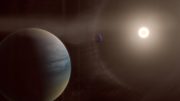
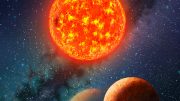
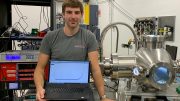
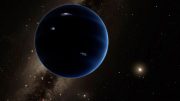

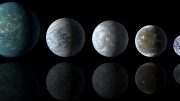
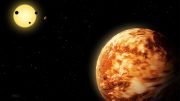
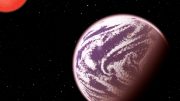
“In addition, Planet Hunters is launching an effort to see if there is a correlation between types of stars and the planets that form around them.”
The existence of such a correlation would only be expected if the core accretion theory of planetary formation was correct. However, not only can it not account for the multiple “anomalies” within our own Solar System, but it is completely at sea with the “weird and wonderful” exoplanetary systems which have recently been discovered.
Since I do not hold with that theory, preferring to believe that planets are “born free” – instantly, as it were – as supernova shrapnel and captured by stars which they happen to pass during their travels if the gravitational conditions are right, I shall not be in the least surprised if no such correlation is found.
This is hardly the first low-density super-Earth to be found. Several statistical analyses of Kepler data published this year are all pointing towards an important transition occurring from terrestrial planets to mini-Neptunes (like PH3 c) around 1.5 to 1.6 times the radius of the Earth which corresponds to masses of about 4 to 6 times that of Earth. Discoveries like this very strongly suggest that the majority of the planets believed by many to be “potentially habitable” are in fact not even terrestrial planets.